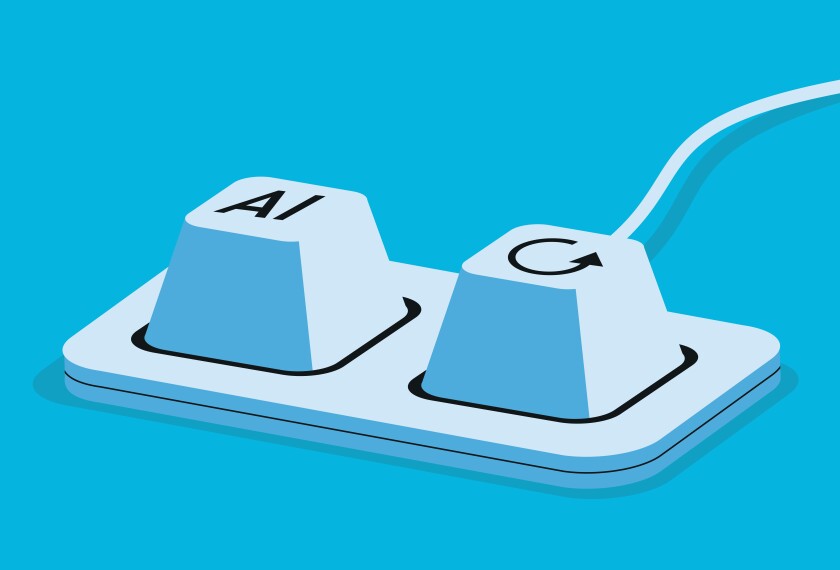In a move reflecting the rise of new media over old, the education software maker Riverdeep Holdings Limited announced last week its $3.4 billion purchase of the Houghton Mifflin Co., among the United States’ oldest and largest education publishers.
The 174-year-old Boston-based textbook company will merge with the 11-year-old Dublin, Ireland-based software company under the name Houghton Mifflin Riverdeep Group PLC, when the deal becomes final by year’s end, a Houghton Mifflin spokesman said. The companies have combined annual revenues of $1.4 billion and earnings before taxes and interest of $392 million.
“We are excited about … the ability to capitalize on the convergence of print and digital platforms,” said Barry O’Callaghan, Riverdeep’s chief executive officer.
The convergence between digital and traditional print publishing was discussed at the Software and Information Industry Association’s annual Ed Tech Business Forum, held Nov. 27 in New York City. For more, read the related story,
Ed. Tech. Executives Gather to Brainstorm How They Can Serve Schools Better
He is also the executive chairman of HM Rivergroup PLC, the new company formed to engineer the acquisition and merger. The company bought the traditional publishing concern from the private investment firms of Thomas H. Lee Partners, Bain Capital Partners, both based in Boston, and the New York City-based Blackstone Group.
The takeover of the venerable American firm, which has published such great American writers as Mark Twain and Henry David Thoreau, by a young, foreign, and smaller technology concern is a bold move, said industry analyst Trace Urdan, a managing director with Signal Hill, a San Francisco investment bank.
“This is like the minnow swallowing the whale,” he said.
It is also risky, Mr. Urdan added. The new company will shoulder $1.6 billion in net debt included in the $3.4 billion sale. Other companies have taken the same gamble and lost, he said.
Houghton Mifflin’s net sales in K-12 publishing fell 2.3 percent in the first nine months of 2006 compared with the same period in 2005, to about $780 million from $798 million. The company’s operating income for K-12 publishing rose 3.4 percent between those periods, from $186.8 million to $193.4 million, documents show.
Before the announcement, it was widely known in the industry that privately held Houghton Mifflin was planning to sell company shares to the public in the hope of raising $1 billion, which would reap benefits for its owners. The firms bought the company from the French media conglomerate Vivendi Universal SA in 2002 for $615 million in equity and $1 billion in assumed debt.
A Houghton Mifflin spokesman would not comment on the possibility of a potential initial public offering of company shares.
“The conventional wisdom is that they’re setting themselves up for failure,” Mr. Urdan said of Riverdeep. “But if they can crack the code and have the same sort of win rate in [textbook] sales … and do it digitally at a much lower cost, then the deal will be successful.”
The convergence extends to the management of the new company. Houghton Mifflin’s president, chairman, and CEO, Tony Lucki, is a former member of the Riverdeep board of directors. Under the merger, the publishing concern will remain in Boston, and Mr. Lucki, will become the vice chairman of the new company.
Houghton Mifflin’s products include the Language of Literature anthology series for middle and high school students through its McDougal Littell division, which the company acquired in 1994, and the Iowa Tests of Basic Skills through its Riverside Publishing division. Riverdeep’s products include Reader Rabbit and Destination Success, its online math and reading series.
Rise of Web
The sale of Houghton Mifflin is one more sign of the transition from print to Web-based curricula among publishers, experts say. Increasingly, publishers are embracing technology companies—and vice versa—to offer a blend of print and digital curricula that K-12 schools want, said Jay Diskey, the executive director of the school division of the Association of American Publishers, a Washington-based trade association.
Mergers-and-acquisitions activity in recent years in the education and reference market has been robust, with the London-based textbook publisher Pearson PLC leading the charge.
Earlier this year, for instance, Pearson won a $70 million contract in California to provide history curricula via digital books, videos, assessment, and interactive-learning tools to at least 1.5 million elementary school students. The company estimates that almost 50 percent of all K-5 students in the state will use those online products.
The Association of American Publishers rewrote its mission statement recently to omit “textbook.” Some of the group’s 300 members have never published traditional print books, such as digital publishers Learning.com, based in Portland, Ore., and Lakewood, N.J.-based Achieve3000.
Sales of digital instructional content by education publishers rose more than 52 percent in the United States from 2001 to 2005, from $152 million to $234.4 million, according to the AAP.
“ ‘Textbook’ no longer describes this industry,” Mr. Diskey said. “For a long time, the technology industry pursued its goals … separately from the publishing market. But there really has been a convergence.”




